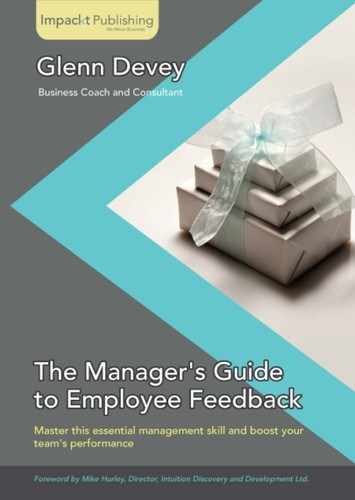- Background
- Activity
- Results
This model is ideal for first time managers as it's simple to remember and allows the conversation to flow naturally due to its structure. Because it's geared around addressing a unique event, it follows a "General to Specific" pattern (which is how the majority of our adult education system is structured). You first remind the receiver about the time and place the event happened, then you describe the activities and behaviors, and then finally you invite the receiver to consider the results or response. It's a very logical flow, and you take the receiver on a descriptive journey with you as you go. You can check for understanding and recall as you go along, which means that the final message usually has a greater impact than if it was just presented without any supporting evidence.
First, frame the discussion and then remind the receiver about the event which is to be discussed. For example:
"Marie, I want to talk to you about the e-mail that you sent to Jones and Brown this morning."
"James, can I have five minutes with you to discuss the figures you submitted for this month's sales projection please."
"Great, while we've got a few minutes without the rest of the team, I want to speak to you about what happened between you and Simon just before lunch."
Now describe what specific activity or actions took place that need to be discussed and addressed. Remember the principles in Chapter 1, Feedback Fundamentals; describe what you noticed using your external senses without making any mind-reading statements or using any vague language! And remember that if you are quoting something that was said at the time, quote the phrase verbatim without adding or deleting anything. Arguing about exactly what was or wasn't said will only dilute the feedback message.
"When I opened your e-mail and read the content, I was rather surprised to see that you'd used the expression "your fault" to our second largest client."
"As I was reviewing your submission to the Financial Controller, I noticed that the numbers in column D were out by a factor of 100."
"When Simon offered his opinion on your presentation to the Executive Committee, I saw you lean forwards, raise your voice, and clench your fists while you addressed him."
Finally, highlight what happened as a result of the activity. If there were other people involved, talking about the response may be most appropriate. If not, a discussion around outcomes may be required. You then have a choice after this stage as to whether to be prescriptive and "tell" your team member something, or to make an enquiry and "ask" them something. This is the beginning of exploring the difference between being a mentor and sharing your experience, or being a coach and asking the receiver to reflect and draw their own conclusions. Mentoring and coaching are both essential ingredients for developing your new management skills, but both are subjects large enough to fill entire books on their own.
Tip
Make it a learning objective to become skilled at both mentoring and coaching.
To temporarily bridge the knowledge gap to becoming a skilled mentor or coach, consider the following question and answer:
- Q. What happens when a member of staff consistently relies on his or her manager to provide solutions to complex problems for them?
A. When I've observed this in the past, staff miss out on the opportunity to innovate and develop their own critical thinking skills.
First I gave you an example of coaching, where I asked you to consider the question and conclude for yourself. Then, when I shared my experience in the answer, I switched to mentoring mode.
Here are two examples of how you can discuss results and then lead into a directive style of "telling" the person what to do or a non-directive style of "asking" them how they could do it differently:
"The result of your e-mail was a phone call to me from our client saying that they found your communication rude and unprofessional. This was a very unpleasant conversation for me and one that I don't want to have again. Next time you have to settle a difference of opinion with a large client, I want you to think about how the person will feel when they read what you have written."
"How do you think the senior partner felt when they read your e-mail saying it was their fault that we had failed to reach an agreement on a major point in the project? (wait for reply) How might that affect the recent tender we have submitted for a second bid?"
Essentially, you can stay in a directive and prescriptive mode of conversation whereby you use your own experience to give direction, or you can use a more non-directive, coaching style of conversation to encourage the receiver to make their own conclusions about where to go next. The choice is yours!

